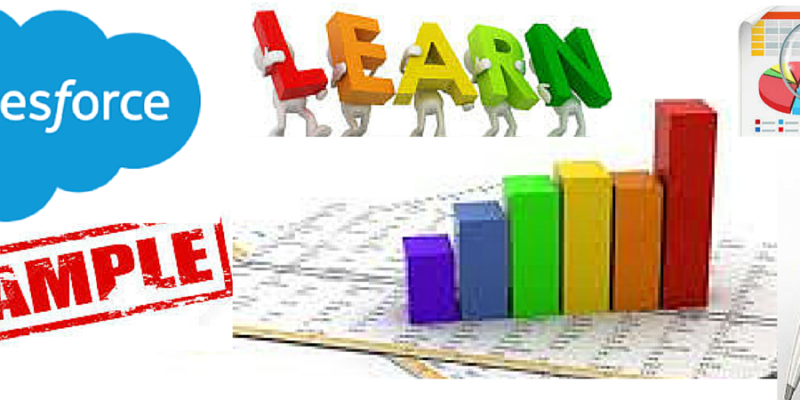Learn Salesforce Reports with Examples – Bucketing in Salesforce Reports is the third part of the series “Learn Salesforce Reports with Examples” where I will be sharing some key features for the Salesforce Reports which is an inspiration from a similar series on formulas – “Learn Salesforce Formulas with Examples” and the numerous related queries on Answers Community. Learn Salesforce Reports with Examples – Bucketing in Salesforce Reports will surely prove to be helpful to the Salesforce Report users in learning & implementing bucketing in Salesforce Reports.
Bucketing:
“Bucketing lets you quickly categorize report records without creating a formula or a custom field, Bucket fields can be used like any other field to sort, filter, and group your report. When you create a bucket field, you define multiple categories (buckets) used to group report values.”
It can group only the below data types fields:
1. Picklist
2. Number
3. Text
I will take an example of a common use case where:
- First Bucketing on Basis of Amount (Numeric Bucketing Example): The Administrator has been asked to segregate opportunities on basis of the “Amount” mentioned in the Opportunity object
- Here if the opportunity amount if “Amount <=500: Category=Bronze”, “Amount >500 to 1000: Category=Silver”, “Amount >1000 to 10000: Category=Bronze”
- Second Bucketing on Basis of Stage (Picklist Bucketing Example): Here all the Opportunities where “Stage = Closed Won” are categorized as “Winning”, “Stage = Closed Lost” are categorized as “Loose” and all other Stages are categorized as “Others”
- Third Bucketing on basis of Opportunity Age (Numeric Bucketing Example): If Opportunity “CloseDate<=10” Category=Immediate Respondent, “CloseDate>30” Category=Late Respondent, “CloseDate>30” Category=Non-Respondent.
Here is how I have categorized bucket fields on my data in Opportunity sObject:
- On basis of Amount
- On the basis of Stage
- Based on Opportunity Age
The second use case here would be using the Bucket field as a filter criteria of the report
- User will create the first Bucket field on basis of Amount:


2. User will create the first Bucket field on basis of StageName:

3. User will create the first Bucket field on basis of Age:

Now the user needs to Create filters based on values in Bucket field:



Get more information on Bucketing in Salesforce Reports I would recommend reading the following documentation by Salesforce: http://sforce.co/2htdoti
Also, don’t miss out on the following articles:
Start with Bucketing in Salesforce Reports: http://sforce.co/2hRh1u4
Number Bucketing Example: http://sforce.co/2iJxqox
Picklist Bucketing Example: http://sforce.co/2iibZIa
Important considerations for all users working on Field-Bucketing in Salesforce:
- As mentioned Earlier:
It can group only the below data types fields:
1. Picklist
2. Number
3. Text
- To show the values for a particular bucket, click the bucket name.
- To remove values from a bucket, select the values and drag them to another bucket, or drag them to Un-bucketed Values.
- Bucket fields can be used for sorting, filtering and grouping your report.
- Bucket field of a report is only available for that report where it’s created.
Finally, lets use a bucket field in our report:

Hope you Enjoyed the blog “Learn Salesforce Reports with Examples – Bucketing in Salesforce Reports”, stay tuned for more blogs in the series.



